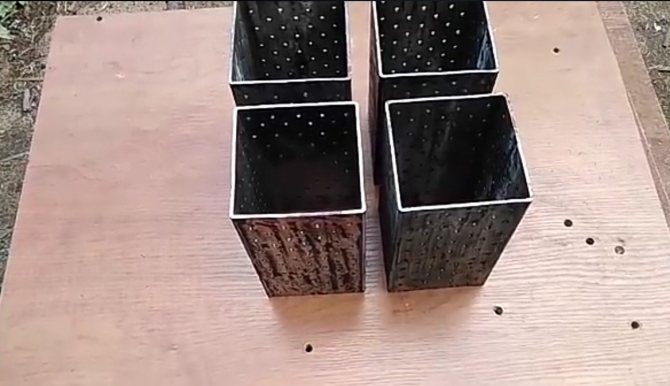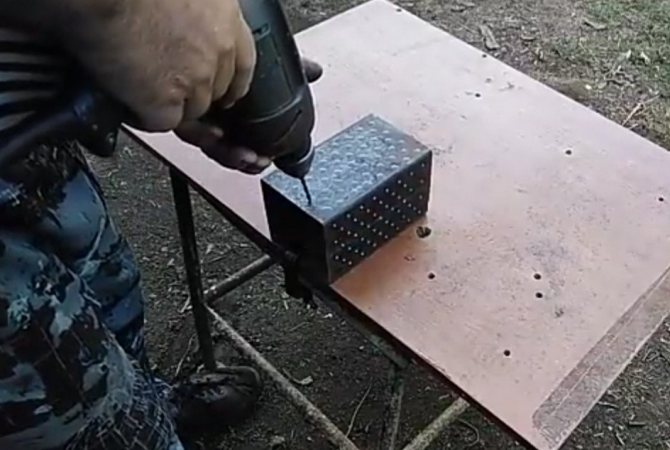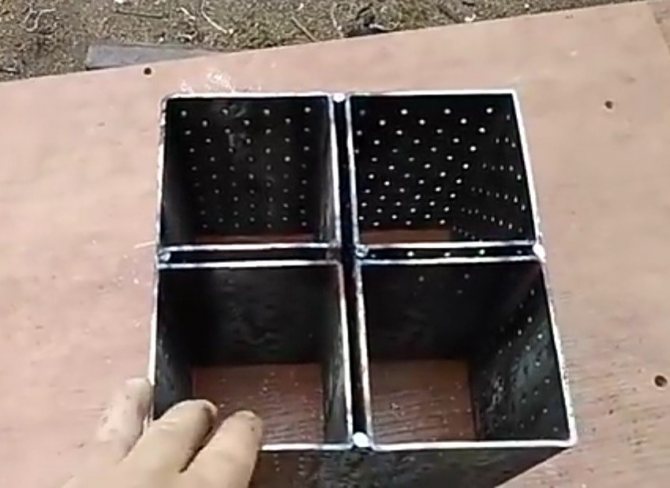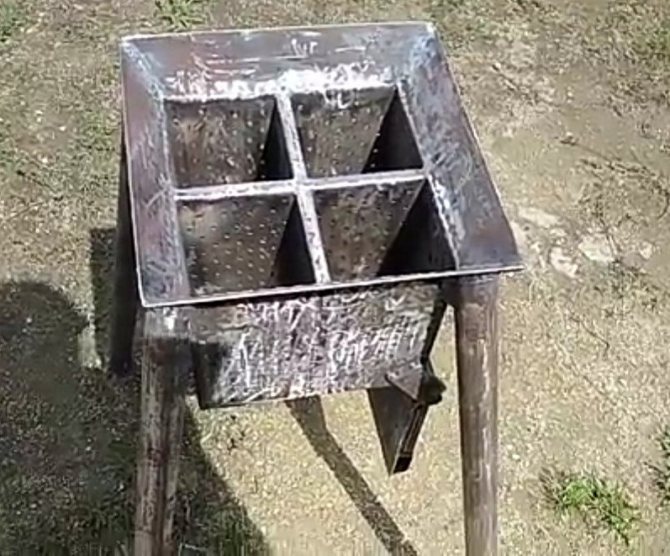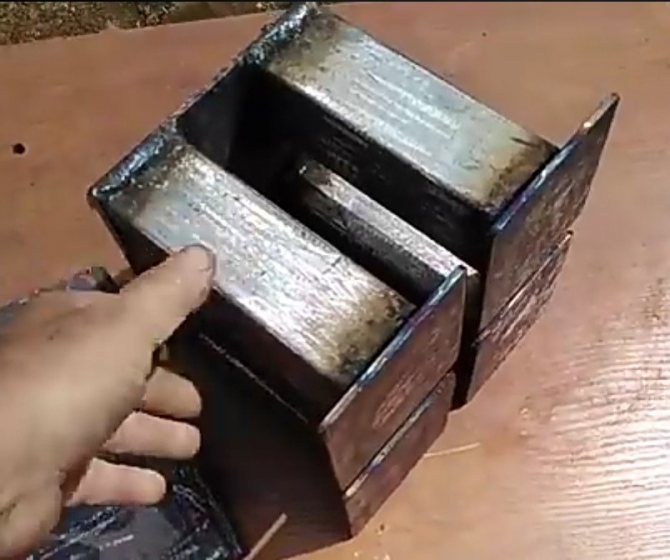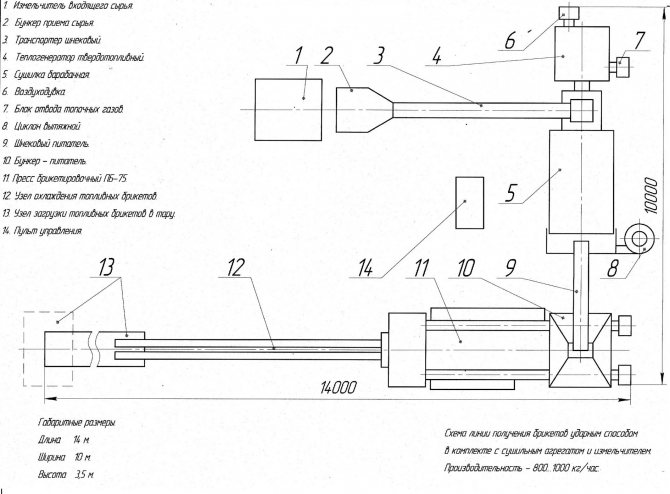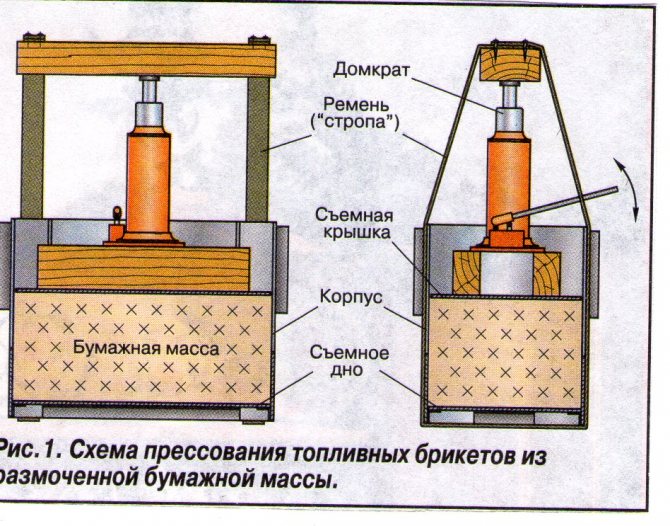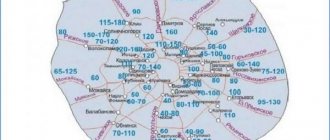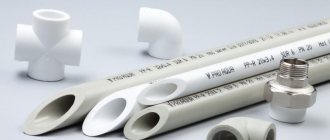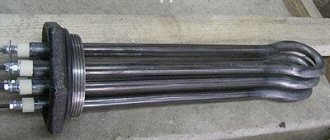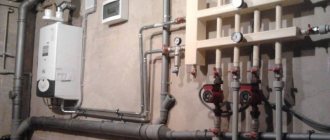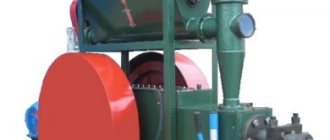Natural wood is highly valued in construction, furniture production and other areas of the national economy. After processing, even waste is used. One of the directions is the pressing of sawdust, as a result of which briquettes are formed, which have a longer burning period than firewood and other types of solid fuels.
The design of the presses differs slightly depending on the type; in general, it is a mechanical device with a base, a power frame and a drive. The principle of operation is to compact raw materials and form briquettes, fillers for pet trays.
The process of preparing sawdust deserves special attention. They are pre-sorted, dried and crushed. This helps to produce better quality products. In addition to sawdust, briquettes may include waste paper, nut shells and sunflower seed husks.
Before deciding to buy a press, it is worthwhile to understand the appropriateness of its use. The equipment justifies the costs in the presence of available raw materials and a solid fuel boiler (or product market).
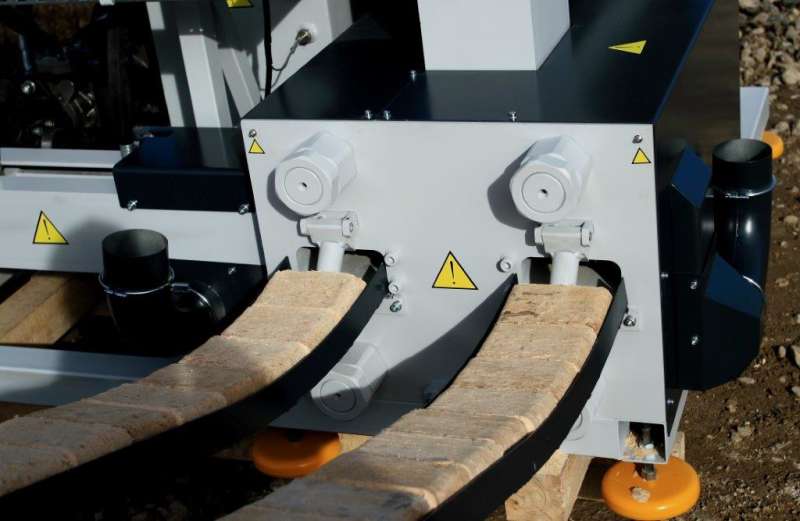
Among the advantageous characteristics of the presses:
- rational use of wood waste (for heating rooms, greenhouses, utility rooms, ash is used as fertilizer);
- understandable and accessible production process;
- simple and reliable device (hydraulic models practically do not have units of increased wear);
- maintenance does not require knowledge of complex technologies.
The disadvantages include:
- the use of equipment provides for the preparation of raw materials;
- rapid wear of units in the screw extruder;
- in some types, the addition of binders is provided.
Types of presses
There are 4 types of presses used for processing sawdust. The differences between the devices are noted in the principle of operation and cost.
The requirements for the preparation of raw materials are the same:
- uniform grinding to obtain fractions of no more than 25x25x2 mm;
- humidity level within 4-10%.
Each model has both advantages and disadvantages, therefore, before choosing, you should carefully read the technical characteristics:
- The mechanical impact press, according to the principle of operation, resembles a hammer drill, where the crank mechanism transmits a series of shocks to the piston with a frequency of 20 times per second. The blows provoke the pushing of the sawdust through the die. The equipment copes with pressing not only wood waste, but also a mixture of coal dust, straw, peat, residues after MDF processing. The main advantage of the press is long-term functioning without human intervention. High productivity is also noted. The crank nodes are a vulnerable spot, which is due to the effect on them simultaneously of 2 forces: shock and friction.
- The hydraulic press is a two-piece device (mold, cylinder). According to the principle of operation, the equipment resembles the action of a jack, where a hydraulic cylinder exerts pressure with a piston on a mold filled with prepared raw materials. The result is a molded briquette. The equipment is considered simple and reliable to use, there are practically no wear units. Pricing policy Models of this type are competitive. The downside is poor performance. There is also a nuance in the production process - a binder is added to the prepared sawdust.
- The screw press (extruder) is similar in principle to a meat grinder. The crushed and dried sawdust is fed through the auger through the die, as a result of which the mass is compressed and pressed under high pressure. The process involves exposure to high temperatures, without which the equipment can jam. The hot stream provokes the release of lignin (a natural binder) from the wood, which holds small raw materials together and is the key to high-quality molding. The screw device is considered the leader in performance, the production process is carried out continuously. Of the shortcomings, the need for heating is noted, which makes the preparation procedure lengthy. You also need to take into account that the finished product has a lower calorie content due to exposure to high temperatures (above 120 ° C). Units such as auger and die are quickly worn out due to increased friction during operation.
- A pellet press is similar in principle to a pellet mill for compound feed, only sawdust is used instead of grain crops. Compared to other types of equipment, it has the simplest device, but at the same time it has good performance and an affordable price policy. The press is completed with various devices to improve the quality of the resulting product. These are: a mixer for mixing raw materials, a humidifier for over-dried workpieces, various cutting attachments that change the shape of the briquettes. The manufacturing process involves the use of an additional binder to increase the density. Of the minuses, the need to grind the raw material during preparation to the finest fraction is noted. On such equipment it will be possible to produce only small briquettes.
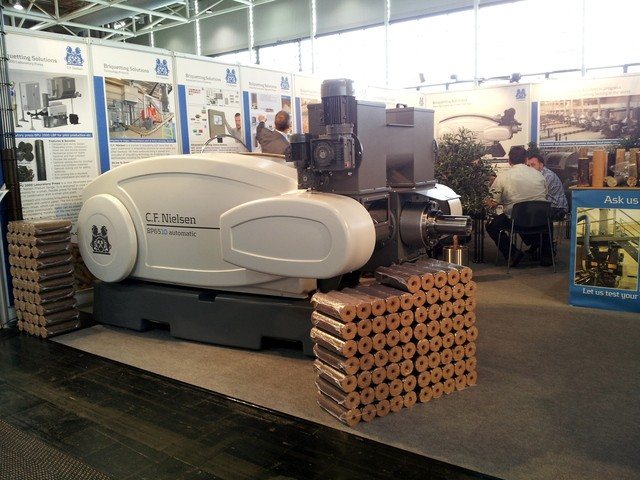

Each model has both advantages and disadvantages, therefore, before choosing, you should carefully read the technical characteristics.
Material requirements
If someone sets a goal to switch to using a heating system that runs on wood waste, then most often it is assumed that the whole process comes down to feeding chips or shavings into the firebox, setting it on fire, and this ultimately allows you to achieve the required temperature.
But at the same time, one must not forget that some of the sawdust not suitable as fuel... To make the right choice, you need to pay attention to characteristics such as moisture and density of the material. It is these parameters that affect the efficiency of the boiler.
The following figures can say a lot:
- For wet small sawdust, made on a band sawmill, a density of about 250 kg / m3 is characteristic. In order for the boiler to generate 1 kW of heat, it is necessary to burn 0.5 kg / hour during continuous operation of the installation.
- For porous dry shavings obtained as a result of work on a milling machine, a density of the order of 100-150 kg / m3 is characteristic. In order for the boiler plant to stably maintain 1 kW of thermal energy, 0.25 kg of fuel must be consumed every hour.
Thus, it becomes clear that it is best to use fuel to maintain the operation of the boiler, past drying operation... In this case, the device will be able to demonstrate the most efficient operation with the minimum consumption of sawdust.
At the same time, it should be borne in mind that among all the nodes of the heating system, which operates on bulk waste from the woodworking industry, the place where the fuel is stored deserves the greatest attention. When using a boiler with a power of 25 kW, in conditions of an average negative temperature, it is necessary to spend about 0.5 cubic meters daily. m. sawdust. Therefore, in order to supply the device with fuel, it will be necessary to solve the problem of regular supply of wood waste or to organize a sufficiently spacious warehouse.
Equipment selection
When choosing a sawdust press, important factors should be considered:
- the purpose of the equipment;
- what kind of raw materials it works for;
- type of briquettes produced;
- device power;
- planned volume of finished product output;
- completing with other equipment to obtain a high quality product;
- functionality of the selected model;
- operating mode of the unit and features of its maintenance.
You also need to pay attention to the components that are subject to wear. Frequent repairs and their cost will help determine the rationality of buying a particular model.
When choosing a press for personal use, you should remember that the equipment should be simple with options for setting parameters. If the products are not planned to be put up for sale, then it is enough to purchase only one unit. To reduce the cost of purchase, you can take advantage of interesting offers for the sale of used devices.
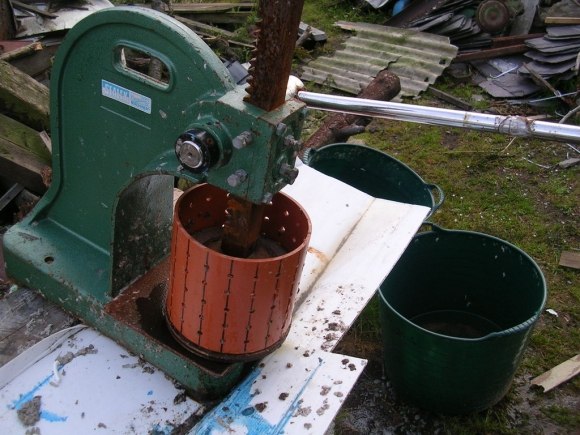

When choosing a press for personal use, you should remember that the equipment should be simple with options for setting parameters.
Output
A sawdust heating boiler can be a good solution if the fuel is located nearby or if you can organize a dry and waterproof warehouse with a large volume for its storage. It is impossible to deny the positive effect of using this method of heating housing, especially since it has been used in European countries for quite a long time (see also the article "Heating boilers under development: studying the prospects").
Another plus is environmental friendliness, it is nice to know that you will not leave a dirty atmosphere for children. The video in the article will provide an opportunity to find additional information on the above topic.
Did you like the article? Subscribe to our channel Yandex.Zen
Do it yourself
The high cost of equipment does not always justify the cost of purchasing it, so craftsmen embody their developments to create homemade presses. It is worth noting that it is quite difficult to make a screw device, so not everyone is taken for this type of pressing.
At home, it is almost impossible to achieve the required pressure level that would ensure the release of lignin. But it is quite possible to build hydraulic units and granulators with your own hands.
All homemade devices are divided into three main types:
- The technology of sawdust briquetting itself is quite interesting and has its own advantages, so the owners do not deny themselves the desire to acquire a home press
from jacks;
- with manual drive;
- with hydraulic drive.
The technology of sawdust briquetting itself is quite interesting and has its own advantages, so the owners do not deny themselves the desire to acquire a home press.
Thanks to the use of briquettes, it is possible to prevent the formation of debris at the furnace or boiler, as well as to exclude frequent loads. The location of home-made units can be wall-mounted and floor-standing, this is as convenient for anyone.
Before proceeding with the assembly of the press, it is necessary to take into account all stages of the production process to ensure the drying and crushing of the raw materials. It is also worth taking care of a utility room or a shed for storing finished products.
To assemble a hydraulic press, you will need to prepare the following materials and tools:
- metal sheet 4-6 mm;
- corner 100x100 mm;
- channel;
- a pipe with thick walls (the diameter is determined by the dimensions of the briquettes at the outlet);
- pipe 25-30 mm for the manufacture of the punch rod;
- galvanized steel for forming trays;
- large pipe or sheet of metal for the manufacture of the mixer body;
- welding machine and electrodes;
- grinder with discs;
- drill;
- a hammer;
- measuring devices, etc.
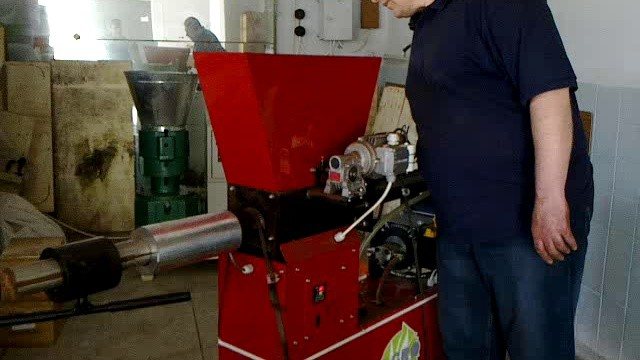

Correct kindling with pressed sawdust
When kindling ordinary stoves made of stone and clay, fireplaces, as well as boilers operating on solid fuel, sawdust briquettes are used according to the same principle as simple firewood according to the instructions for the heating device.Please note that in a brick fireplace and traditional for many stoves, firewood from pressed sawdust cannot be fired for more than two hours in a row. Otherwise, under the influence of constant high temperature, the process of destruction of the masonry may begin.
When using pressed softwood briquettes for the stove, take care of cleaning the chimney twice a year. Resins and other substances form volatile compounds and are deposited on the surface of the walls.
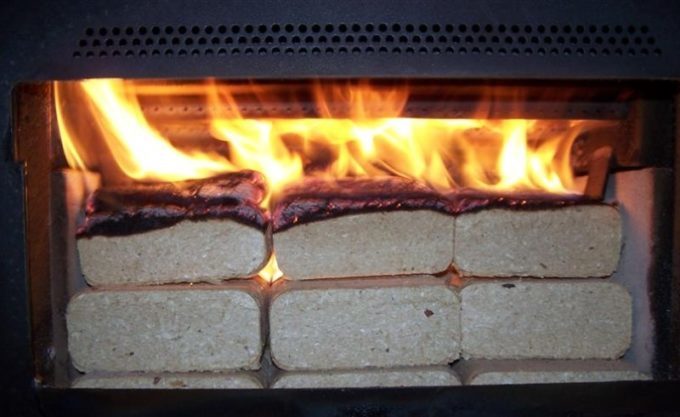

Since the sawdust combustion temperature is high, then one tab of fuel is enough for the whole night for high-quality heating of all rooms.
Sawdust fuel is a quality alternative to coal and wood. However, you need to build a correct and efficient apparatus and calculate how much fuel is needed for kindling throughout the year.
The structure is made on the basis of a hydraulic installation
Step-by-step instructions for making a press
- To make the base, you need to connect the parts from the channel by welding.
- Cut 4 pieces 1.5 m long from the corners (they are used as racks). Weld them to the base at the same distance from each other (vertical arrangement).
- Fix a drum made of a large-diameter pipe to the corners. If such a pipe is not at hand, you can make a mixer body from a sheet of tin. To increase productivity, it is equipped with an electric motor.
- A box for filling raw materials is made of sheet iron. It is recommended to make the shape of the body in the form of a cone for the spontaneous movement of the loading when filling the trays.
- The gearbox is fixed to the bottom of the cone-shaped body. and weld the output tray.
- In a pipe with thick walls, make holes at intervals of 3-5 mm. During the pressure on the mass, air and water will escape through the holes. Weld a flange to the bottom of the workpiece, which will hold the removable bottom. The bottom is made of steel sheet in the form of a circle with lugs.
- Weld the matrix to the base under the cone-shaped body.
- Cut a disc of this size from sheet steel, which would allow you to move freely in the matrix. It functions as a punch.
- Weld the prepared tube for the stem to the punch. The other edge is attached to the hydraulic unit.
- The assembled unit is attached to the racks directly above the matrix.
- The receiving tray is installed in such a way that it does not interfere with the shooting process and fixing the matrix bottom.
Preliminary drying will be provided by heating elements installed along the perimeter of the machine. The briquettes will be able to take final readiness in an open area with a low air humidity.
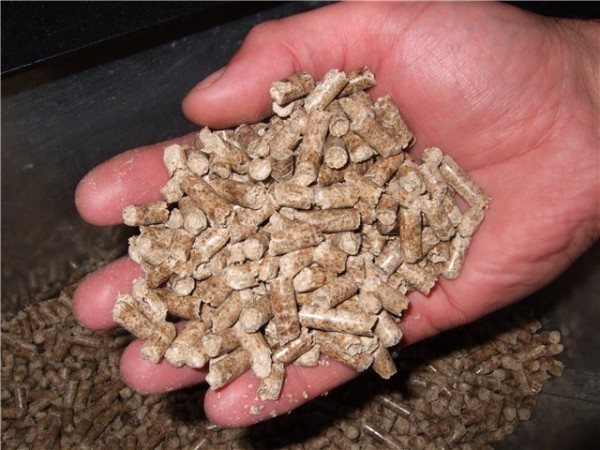

According to the technological process, the raw materials need to be prepared before processing, which means that a dryer and a device for grinding will be required.
Homemade or store-bought
The purchase of a press is justified in cases when production adjustment is planned. There is no need to purchase equipment for the production of briquettes, which will subsequently be used only for household needs. In addition, the cost of the units is high, not everyone can afford it. And the installation provides for a separate room.
According to the technological process, the raw materials need to be prepared before processing, which means that a dryer and a device for grinding will be required. In addition, the finished briquettes after production must be stored in a dry room, which simply may not be available.
Handicraft production will not produce a high-quality product, briquettes will have insufficient density, and this reduces the specific heat of combustion. Having weighed all the factors, we can summarize that there is no point in purchasing expensive equipment.
If a solid fuel boiler is installed in the house, you can build a press with your own hands.This will require available materials, as well as familiarization with the design diagrams in order to choose the appropriate option.
The advantages of using ready-made presses for production purposes:
- simple arrangement of equipment;
- the ability to replace worn out units;
- selection of models of different capacities and performance;
- the technological process does not require special knowledge and skills;
- you can equip the workshop in a small room.
When deciding to start production, it is worth considering important factors:
- type of raw material, its availability;
- the approximate volume of processing for a certain period of time;
- required areas;
- the scheme for the sale of finished products.
For large-scale production, it is recommended to purchase automatic and semi-automatic equipment. The units are distinguished by high efficiency and wear resistance of working units.
The production of fillers for animal trays can be put on stream using granulators. The diameter of the product just meets the standards, and a high density is not required.
Comparison of briquettes with conventional solid fuel
The cost of coal, firewood or pressed sawdust used for heating varies depending on the region. Therefore, there is no unambiguous decision on the choice of this or that type of fuel. It is necessary to take into account the current price and conduct an analysis of comparative characteristics.
Specific calorific value
One of the main indicators of fuel efficiency is its specific calorific value (specific heat of combustion). This parameter determines how much mass fraction of a substance during its combustion will be required to release a certain amount of energy.


Comparative calorific value of different types of fuel. These values are approximate and depend on many factors. But in general, the table shows the rating of solid fuel in terms of specific heat of combustion.
There is one nuance here: the calorific value depends on the mass, and firewood and sawdust briquettes are usually measured in cubes. When advertising compressed fuel, it is often indicated that the energy yield is almost twice as high as when burning wood, but they do not indicate the fact that the weight of dry briquettes in one cubic meter is greater.
Let us assume that the calorific value of freshly cut birch is about 2 kcal / kg, and that of briquettes is 4 kcal / kg. The weight of the stacked cube of firewood is about 570 kg / m3, and the weight of the same volume of pressed material is about 800 kg. Therefore, a cubic meter of raw chopped wood during combustion will give about 1.14 mCal, and briquettes - about 3.2 mCal, that is, almost three times more.
The thermal efficiency of industrially manufactured briquettes can be compared to charcoal or coal, but the latter is much cheaper.
Storage and ease of use
One of the disadvantages of pressed raw materials is its high hygroscopicity. The intense ability to absorb moisture leads to a loss of stiffness between the bound particles and possible crumbling of the briquette. Therefore, unlike the same coal or firewood, it is necessary to store sawdust in a dry place.
However, in winter, pressed fuel can be kept under an ordinary shed, since at sub-zero temperatures the absolute humidity is low. It is only necessary to ensure that there is no direct contact with the snow.
Also, fuel briquettes can be kept indoors. Commercially produced pressed raw materials practically do not give any waste, in contrast to the same firewood.
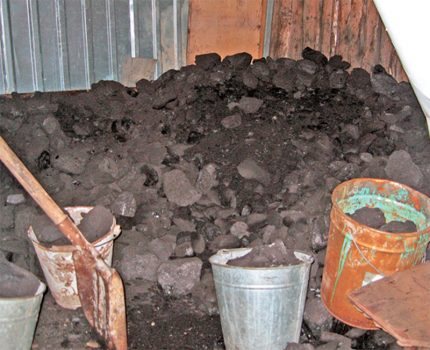

Due to the dirt and dust generated, coal and firewood are stored outdoors. Neat briquettes from shavings can be kept in the veranda of the house
Pressed wood requires a minimum amount of ignition material to start burning. Here sawdust, like peat, is beyond competition.
Application in boilers for long burning
Now deserved popularity, especially among the owners of cottages, are long-burning boilers.They are economical, highly efficient and easy to operate. Their only significant disadvantage is the cost of equipment and the cost of its installation.
Many advanced boiler models are equipped with an automated fuel loading system. For its operation, it is necessary to use a combustible material of a uniform shape. For this, pellets are made from sawdust and shavings.


Pellets are made from wood waste by pressing. They are in the form of granules with a diameter of 6-9 mm and a length of 10 to 70 mm.
The use of this type of fuel in such boilers allows maintaining the required temperature regime without human intervention. This makes it possible for the owners of cottages to be absent for a long period (up to several days) without the risk of cooling the dwelling to unacceptable levels.
Blitz Tips
- When making a homemade screw extruder only high quality steel should be used.
- It will not be possible to reproduce the process of producing briquettes with the release of lignin on home-made equipment, therefore, it is recommended to add clay, cheap wallpaper glue or corrugated cardboard to the crushed raw materials. These components will be used as a binder.
- The simplest and most affordable are considered to be hand-made devices equipped with a manual screw drive. The perforated form is filled with prepared sawdust mixed with a binder. Forming is carried out by tightening the screw. Such a press has one significant drawback - low productivity.
- Some craftsmen use a hydraulic jack to assemble a home press. It should be noted that such a device is not capable of creating a pressure of even 300 bar. A small amount of water and a binder added to the crushed raw material will help to improve the quality of the briquettes.
- Crushed sawdust is used for the press, so the equipment should be supplemented with a rotary machine, where you can prepare raw materials for pressing. You can also make a shredder with your own hands from an old washing machine. To do this, it is enough to install knives instead of the activator.
